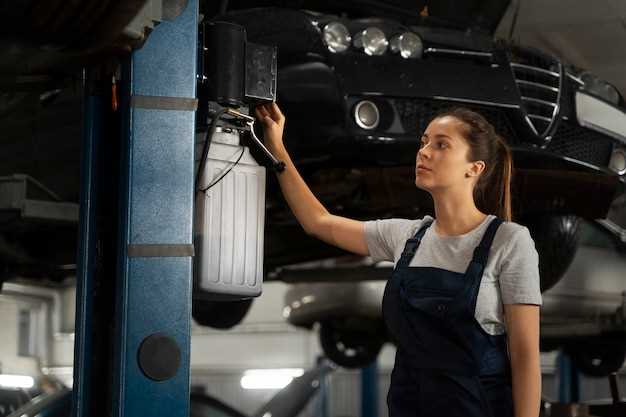
When it comes to owning a used car, establishing a solid maintenance routine is essential for ensuring longevity and reliability. Many new owners underestimate the importance of regular checks and care, which can lead to costly repairs and diminished performance. By adopting simple yet effective practices, you not only preserve the vehicle’s condition but also enhance your overall driving experience.
Performing routine maintenance checks is not just a recommendation; it’s a necessity for any used car owner. Regular inspections of crucial components such as the engine, brakes, and tires can help identify issues before they escalate into serious problems. Moreover, seasonal checks can prepare your vehicle for changing conditions, ensuring optimal performance year-round.
Incorporating these best practices into your car care regimen will not only keep your used vehicle in top shape but also save you money in the long run. By being proactive and informed, you can enjoy the reliability of your car while minimizing unexpected breakdowns and repairs.
Performing Regular Oil Changes and Fluid Checks
For owners of used cars, maintaining optimal engine performance is crucial. One of the most effective ways to achieve this is by performing regular oil changes. Engine oil lubricates moving parts, reduces friction, and helps dissipate heat. Over time, oil can become contaminated with dirt and debris, losing its effectiveness. Therefore, adhering to a routine schedule for oil changes tailored to your vehicle’s specifications is vital.
Additionally, regular fluid checks are equally important for the longevity of used cars. Alongside engine oil, other essential fluids–such as coolant, brake fluid, power steering fluid, and transmission fluid–should be monitored and replaced when necessary. Low or degraded fluids can lead to significant mechanical issues and compromise safety while driving.
Establishing a maintenance routine that includes oil changes and fluid checks not only helps in preserving the integrity of used cars but also enhances their resale value. Keeping detailed records of these services can provide future buyers with proof of proper care, making your vehicle more appealing in the market.
Inspecting and Maintaining Tire Health

Tires are a critical component of any vehicle, and their condition directly impacts safety and performance, especially in used cars. Routine tire maintenance is essential to ensure longevity and optimal function. Regular inspections can help identify problems early, potentially saving on costly replacements and enhancing overall driving experience.
Begin by checking the tire pressure monthly using a reliable gauge. Proper inflation is crucial for even tire wear and optimal fuel efficiency. Under-inflated tires can lead to excessive wear on the edges, while over-inflated tires may cause uneven wear in the center. Always refer to the manufacturer’s recommended pressure found in the owner’s manual or on a sticker inside the driver’s side door.
Next, assess the tread depth. Tires with insufficient tread can compromise traction, especially on wet surfaces. The penny test is a simple method: place a penny into the tread with Lincoln’s head upside down. If you can see all of Lincoln’s head, it’s time to replace the tire. Many used cars may have older or worn tires, so staying vigilant about tread health is particularly important.
Additionally, inspect tires for uneven wear patterns, cracks, or bulges. These issues can indicate misalignment, balancing problems, or other underlying issues that need attention. Regular rotation of tires, typically every 5,000 to 7,500 miles, helps ensure even wear across all tires. This practice is especially beneficial for used cars, as it can extend the life of the tires and improve overall vehicle handling.
Lastly, don’t overlook seasonal changes. In climates with significant temperature fluctuations, switching to appropriate tires, such as winter tires for snowy conditions, can enhance safety and performance. Always consider the specific driving conditions expected for your area when making tire choices.
In summary, maintaining tire health in used cars requires diligent routine inspections, proper inflation, tread depth checks, and attention to wear patterns. Regular maintenance can significantly enhance safety and prolong the life of your tires.
Scheduling Routine Brake and Suspension Inspections

Regular maintenance of used cars is crucial for ensuring safety and performance. Among the most vital aspects is the inspection of brakes and suspension systems. These components significantly affect vehicle handling, stopping power, and overall driving experience.
To maintain used cars effectively, consider the following best practices for scheduling inspections:
- Establish a Maintenance Schedule:
- Review the owner’s manual for manufacturer-recommended service intervals.
- Consider your driving habits and environment to customize the schedule.
- Set reminders for checks, ensuring you don’t overlook this crucial maintenance.
- Monitor Brake Performance:
- Pay attention to any unusual noises, such as squeaking or grinding.
- Notice changes in braking responsiveness or vibrations when stopping.
- Schedule checks if you experience any signs of brake wear or damage.
- Inspect Suspension Wear:
- Look for signs of uneven tire wear, which can indicate suspension issues.
- Check the vehicle’s alignment and handling, especially on rough surfaces.
- Schedule inspections after any significant impact, such as hitting a pothole.
- Utilize Professional Services:
- Find a trusted mechanic who specializes in used cars for comprehensive inspections.
- Keep records of all checks and repairs for future reference and resale value.
- Consult professionals for advice on the longevity of brake and suspension components.
In conclusion, routine brake and suspension checks are essential for the reliable operation of used cars. By adhering to a structured maintenance schedule and addressing issues promptly, you can enhance safety, prevent costly repairs, and enjoy a smoother driving experience.

